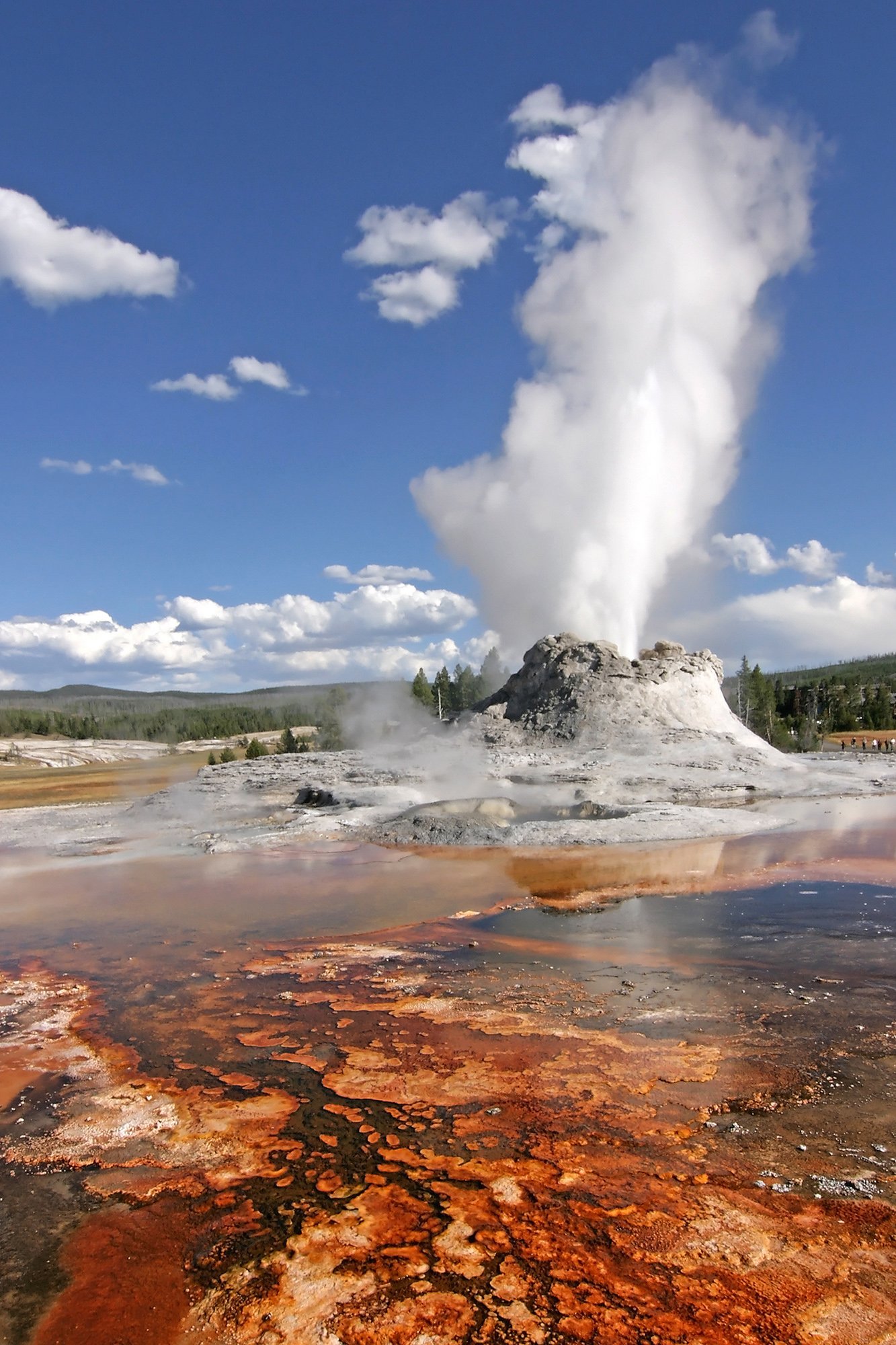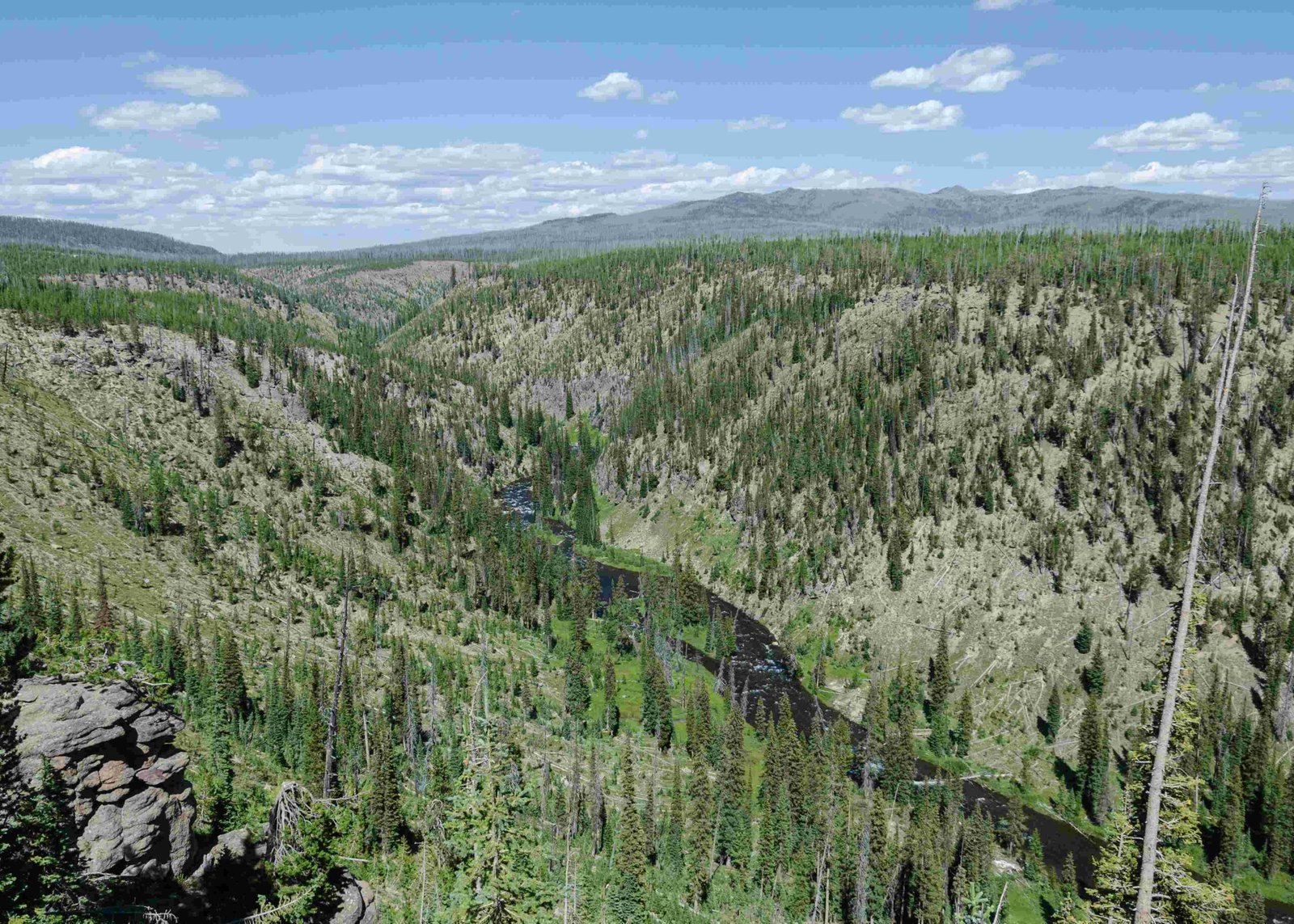The Grand Prismatic Spring, often referred to as Prism Pools, is a stunning geological marvel in Yellowstone National Park. This vibrant hot spring is renowned for its rainbow-like colors, created by heat-loving bacteria that thrive in its mineral-rich waters. Located in the Midway Geyser Basin, the Grand Prismatic Spring is the largest hot spring in the United States and the third-largest in the world, measuring approximately 370 feet in diameter and 160 feet deep.
What Are the Geological Characteristics of Prism Pools?

The Grand Prismatic Spring is a testament to Yellowstone’s volcanic activity. Its formation is a result of complex geological processes:
- Formation Process:
- Cold water from rain or snow seeps into the ground
- Water comes into contact with hot rocks heated by a shallow magma chamber
-
Superheated water rises back to the surface through natural fissures
-
Mineral Composition:
- Rich in dissolved minerals, particularly silica
- Supports various thermophilic bacteria that create colorful microbial mats
-
Silica forms sinter and geyserite deposits around the spring’s edges
-
Surrounding Features:
- Located within the Yellowstone caldera, a massive volcanic hotspot
- Part of the Midway Geyser Basin, home to other hydrothermal features
- Nearby attractions include Excelsior Geyser and Opal Pool
What Is the Temperature Range of Prism Pools?

The temperature of the Grand Prismatic Spring varies significantly from its center to its edges:
| Location | Temperature |
|---|---|
| Center | 200°F (93°C) |
| Discharge | 160°F (70°C) |
| Edges | Varies |
This temperature gradient is crucial for the spring’s iconic appearance:
- The extreme heat at the center creates a deep blue color and prevents microbial growth
- As water cools towards the edges, it supports different types of thermophilic bacteria
- Each type of bacteria produces distinct pigments, resulting in the spring’s rainbow-like rings
Where Are Prism Pools Located and How Can Visitors Access Them?
The Grand Prismatic Spring is situated in a prime location within Yellowstone National Park:
- Precise Location: Midway Geyser Basin
- GPS Coordinates: 44.5243° N, 110.8383° W
- Accessibility:
- Boardwalk around the spring for close-up views
- Grand Prismatic Spring Overlook for panoramic vistas
- Fairy Falls Trailhead for an alternative approach
Visitors can easily reach the spring via well-maintained paths and viewing platforms, ensuring both safety and optimal viewing experiences.
What Are the Best Practices for Photographing Prism Pools?
Capturing the beauty of the Grand Prismatic Spring requires some planning and technique:
- Optimal Timing:
- Early morning or late afternoon for best lighting
-
Avoid midday when sun glare can be intense
-
Equipment Recommendations:
- Wide-angle lens to capture the spring’s vast expanse
- Polarizing filter to reduce glare from the water surface
-
Tripod for stability, especially in low light conditions
-
Viewpoint Strategies:
- Use the Grand Prismatic Spring Overlook for sweeping panoramas
- Explore different angles from the boardwalk for unique perspectives
-
Consider seasonal changes – spring and fall often offer the most vibrant colors
-
Composition Tips:
- Include surrounding landscape elements for scale
- Focus on abstract patterns and color transitions
- Experiment with long exposures to capture steam movements
How Do Seasonal Changes Affect Prism Pools?
The appearance of the Grand Prismatic Spring varies throughout the year:
- Spring:
- Increased water flow from snowmelt
-
Colors may be less intense due to cooler temperatures
-
Summer:
- Peak season for vibrant colors
-
Higher visitor numbers can make photography challenging
-
Fall:
- Often ideal for photography with clear skies and fewer crowds
-
Cooler temperatures can create more steam, adding atmosphere to images
-
Winter:
- Limited access due to snow and park closures
- Unique opportunities for capturing the spring surrounded by snow
What Conservation Efforts Protect Prism Pools?
Preserving the Grand Prismatic Spring is a priority for Yellowstone National Park:
- Visitor Management:
- Designated boardwalks to prevent damage to fragile thermal features
-
Educational signage to inform visitors about the spring’s ecology
-
Scientific Research:
- Ongoing studies of thermophilic bacteria and their ecosystems
-
Monitoring of water chemistry and flow rates
-
Environmental Protection:
- Strict regulations against pollution and contamination
-
Efforts to maintain the natural hydrothermal system of the area
-
Sustainable Tourism:
- Controlled access to manage impact on the spring and surrounding area
- Promotion of responsible visitation practices
How Does Prism Pools Compare to Other Yellowstone Thermal Features?
While Yellowstone is home to numerous thermal features, the Grand Prismatic Spring stands out:
| Feature | Grand Prismatic Spring | Old Faithful Geyser | Mammoth Hot Springs |
|---|---|---|---|
| Type | Hot Spring | Geyser | Travertine Terraces |
| Size | 370 feet diameter | Erupts 130-180 feet | 300 feet tall |
| Color | Rainbow hues | Clear/white | White/orange/brown |
| Temp | Up to 200°F | 204°F at vent | 170°F max |
The Grand Prismatic Spring’s unique combination of size, color, and consistent activity makes it one of the park’s most iconic and photographed features.
In conclusion, the Prism Pools of Yellowstone National Park offer a mesmerizing display of nature’s artistry. From its geological formation to its vibrant microbial ecosystem, the Grand Prismatic Spring continues to captivate visitors and scientists alike. As we marvel at its beauty, we’re reminded of the delicate balance of Yellowstone’s hydrothermal wonders and the importance of their preservation for future generations.

